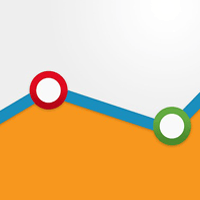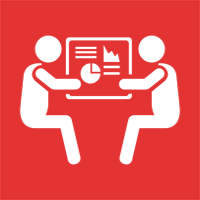Making the Most of Analytics Tools

If you just turned it on, you did it all wrong.
I work with dozens of retailers and consumer brands, including mass market, global, and small start-ups, and data analytics is always a key function of daily business. Every smart leader is constantly looking at their numbers, sometimes obsessively. And with an ever-changing shopping landscape, making the right decisions using this vital information can make or break performance. We all know this.
What many business leaders don't know, however, is exactly how much data they are still missing. Many look at a standard set of ecommerce metrics, but never fully customize their reporting, and as a result they have a huge blind spot in their information.
Here are 10 questions to ask yourself or your team to test depth of knowledge and data availability:
- Do you know your year-over-year conversion rate and revenue? (Hopefully you do!)
- How much traffic has shifted to mobile devices in the last two years?
- What is the ratio of mobile conversion rate vs. desktop? (In other words, does mobile convert half as well or a third as well as desktop?)
- Do you know the drop-off rate at each step of checkout?
- On average, how many users shop across multiple devices? How many devices do they shop on before making a purchase?
- Which buttons in your navigation menu actually get clicks? Do people click on the top-level links or subcategories?
- What percentage of your shoppers are logged in?
- How many purchases are via PayPal vs. credit card?
- Which product merchandising feeds (grid, suggestions, homepage, on-site search) drive the highest click through rates and conversion rates?
- Which modules on the homepage get the highest click through rate and are associated with the most sales?
If you know the answer to fewer than 7 out of 10 of these questions, then you are missing vital pieces of data about your business. And, chances are, that means your analytics system was not customized or fully implemented.
Deep analysis and site experience auditing
Most of the time, executives want to increase their performance, and have broad goals like "increasing mobile sales" or "improving conversion rates," but there is a lack of objective knowledge regarding exactly how to get there. Teams will have opinions about site features or functionality that could use improvement, but before putting budget behind hunches, there must be data support to prioritize which enhancements will actually affect the bottom line.
This is where depth of tracking is crucially important - and these are the moments when businesses wish they had been collecting custom data all along. There are many reasons data collection is often shallow, but - the main reason, of course, is limited resources. Additionally, the lack of internal knowledge of the tools themselves can be limited, since there are hundreds of pages of development guides on tools like Google Analytics and Omniture. Investing the time from the start - or during the next redesign - will provide invaluable information that can't be retrieved any other way.
Three tips for Google Analytics customization
One of the most popular tools for analytics is, of course, Google Analytics. The features and depth of reporting have increased dramatically over the last few years, and as a result the opportunity for customization has become much more complex.
Here are three under-utilized features of Google Analytics that will immediately provide you with valuable data:
- Add event tracking for site navigation menus.
- Site navigation is one of the must "under-tracked" areas of retail sites - and yet it's one of the most hotly debated areas of every site build.
- Knowing which links are most and least useful to shoppers is hugely important in optimizing the most heavily-clicked part of your site.
- Add event tracking for view and click of all homepage modules.
- The homepage is another piece of real estate with huge value, yet most businesses do not know which modules and buttons actually get clicks.
- Add event tracking to monitor both the view and click of each module, logging variables such as: position, date launched, module name, module type, and button CTA.
- Enable enhanced ecommerce and track checkout steps.
- Making optimizations to checkout can be one of the highest ROI changes available. Any small percentage change here can amount to huge increases in orders, especially on mobile.
- Make sure checkout steps are tracked separately (Cart, Shipping, Billing, Summary, Confirmation), and that enhanced ecommerce tracking is enabled in the Admin panel. If drop-off is higher than 20 percent at any step after the shipping, you may have serious checkout issues.
If you employ the above tracking and can answer how people navigate your site, how they use the homepage, and whether they can successfully check out, you will have data on several potential pain points of customer experience.
There are many more Google Analytics features that I would recommend leveraging including product impression/click reporting, User ID/cross-device tracking, custom dimensions for login status, payment option, etc. Generally, these tracking enhancements can be implemented as back-end or template-based changes, meaning straightforward code updates for engineers. Of course, beyond data collection, it's equally important to have a smart team of data strategists.
Business data can be your most powerful tool, so make sure you have the whole story.
 As Associate Director of Data Analytics, Rigel Cable leads the analytics practice at Fluid. With a passion for numbers and more than seven years' experience, he uses data to tell powerful stories around digital performance. He is passionate about understanding consumer behavior and need to create data-driven experiences. He has worked closely with many top retail clients - like Michael Kors, Uniqlo, Fossil, The North Face, and growing business - like Nixon, Otterbox, and American Giant. He has expertise in several forms of analysis, including web analytics, social media analytics, customer research, and others. Rigel graduated magna cum laude from Dartmouth College with a Bachelor of the Arts in Geography with a minor in Spanish.
As Associate Director of Data Analytics, Rigel Cable leads the analytics practice at Fluid. With a passion for numbers and more than seven years' experience, he uses data to tell powerful stories around digital performance. He is passionate about understanding consumer behavior and need to create data-driven experiences. He has worked closely with many top retail clients - like Michael Kors, Uniqlo, Fossil, The North Face, and growing business - like Nixon, Otterbox, and American Giant. He has expertise in several forms of analysis, including web analytics, social media analytics, customer research, and others. Rigel graduated magna cum laude from Dartmouth College with a Bachelor of the Arts in Geography with a minor in Spanish.








